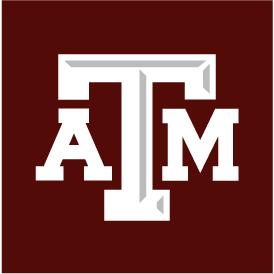Governance
LMS Implementation and Operations
Following the selection of Canvas in January 2020, the learning management system (LMS) architecture and implementation partners included the university’s former Office for Academic Innovation, Division of Information Technology (now Technology Services) and Office of the Registrar as well as The Texas A&M University System. Current LMS operations include a partnership among the Center for Teaching Excellence, Technology Services and Office of the Registrar. LMS governance includes executive and advisory committees and academic liaisons.
LMS Executive Committee
This committee is comprised of upper administration for the purpose of making decisions related to how technologies within Texas A&M’s digital learning environment are acquired, implemented and used by colleges/schools, central offices and site locations.

Jeff Burton
Vice President for Finance & Deputy Chief Financial Office

Ed Pierson
Vice President for Information Technology & Chief Information Officer

Juan Garza
Associate Vice President for Enterprise Application Services

Michael Johnson
Assoc. Provost for
Academic Enhancement
Academic Enhancement

Mauro Sericano
LMS Project Manager
Digital Learning Environment Advisory Committee
This committee advises upper administration on items related to Texas A&M’s digital learning environment. The committee is comprised of members from Faculty Senate, Graduate Operations Committee, Academic Operations Committee, Technology Services, Academic Liaisons, undergraduate and graduate students, and Academic Affairs.
Jana McDonald
Technology Services

Kyle Page
Technology Services

C.J. Shields
Technology Services

Mauro Sericano
LMS Project Manager

Justin Dellinger
Academic Affairs

Michael Johnson
Assoc. Provost for Academic Enhancement

Aubrey Davis
Undergraduate Student

Tamra Walderon
Graduate Student

Lisa Brown
Academic Liaison
Lexis Fentanes
Academic Liaison

Kim Ritchie
Academic Liaison
Jennifer Dworaczyk
Academic Liaison
Ted Seidel
Academic Liaison

Catharina Laporte
Faculty Senate
Asha Rao
Faculty Senate
Terri Helge
Graduate Operations Committee (GOC) Representative

Wayne Versaw
Academic Operations Committee (AOC) Representative
Academic Liaisons
School/College | Academic Liaison | |
|---|---|---|
College of Agriculture and Life Sciences | ||
College of Architecture | Kelsey Tisdel | |
College of Arts and Sciences | Emma Simoni | |
College of Dentistry | ||
College of Education & Human Development | ||
College of Marine Sciences and Maritime Studies (Galveston) | ||
College of Medicine | ||
College of Nursing | ||
College of Performance, Visualization & Fine Arts | ||
Guiding Principles for the DLE
The LMS Implementation Teams have collaborated with the Governance structures to build the following Guiding Principles that serve as the foundation for how the Digital Learning Environment is supported at Texas A&M:
1. Single University Template Applied to all TAMU Courses
Purpose: The Texas A&M University template is automatically applied to all courses in Canvas to enhance the student experience and is 100% accessible out-of-the-box. This template is in place to create a consistent experience across all courses at TAMU so students can easily navigate and predict the structure of their courses.
We have curated resources to better assist in enhancing the template. If you have already modified the template and would like to move content from one semester to another, view the Copying Canvas Materials Between Courses section to determine which method you should use to move content, guidance on both methods, and additional best practices for setting up your course.
Below is a timeline of noteworthy milestones for how the template has evolved since its inception:
| 2020 Summer II | 2020 Fall | 2021 Spring | 2021 Summer | 2021 Fall | 2022 Spring | 2023 Spring |
|---|---|---|---|---|---|---|
| 70 published courses Used accessibility checker and instructional design to ensure accessibility | 23% of course sections published in Canvas Added dedicated Instructor resources | Created student-facing Academic and University resource pages Applied student feedback from Fall 2020 to create the Syllabus page Streamlined the left-side Navigation based on Instructor and student feedback | Accessibility rating becomes priority with a 54% accessibility score | First full semester exclusively on Canvas 98% Accessibility score 96% of 100 and 200-level courses using Canvas | 100% Accessibility score Reduced embedded files from 250 to 138 Reduced storage capacity of the template files from nearly 8 mb to 2.85 mb | Consolidated University and Canvas Resources page for student ease of use Adjusted page Heading structure for ease of use and accessibility, including Syllabus page |
| Moving forward, we are exploring the use of individual templates per subaccount (representing each school, college, or branch campus), although we would do so balancing our commitment to accessibility and student success. | ||||||
2. Training Requirements for Course Associate Roles
Purpose: Course Associate roles that would like to be added into a course in Canvas are required to complete and stay-up to date on training offered through TrainTraq. These trainings were carefully selected by the LMS Implementation teams to ensure those individuals in these roles that receive access to sensitive material such as student grades are compliant.
We have also created a process to allow for non-student employees that do not receive access to TrainTraq to have an opportunity to complete the required training
3. Section Merge Deadline Ahead of the Start of a Semester
Purpose: As course sections are automatically provisioned for instructors, TAMU has launched ORCA where instructors and Academic Liaisons can request to merge sections of Canvas courses. When course sections are merged after students interact with a course, which typically is after the first day of classes, those interactions are lost and cannot be recovered. To prevent the loss of student interactions, we have applied a course merge deadline that falls before the start of classes.
4. Third-Party Tool Integration Process
Purpose: The LMS Implementation teams have collaborated on developing a third-party tool process that encompasses a call for requests, security and accessibility reviews, FERPA compliance, testing, and integration in Canvas. This opportunity to participate in this process has been extended to Academic Liaisons to submit the requested tools for their Academic Units.
Requested tools will move through the process and their status is updated for the campus community to stay up to date on where their requested tool is in the process. Once approved, the tools will be implemented at the requesting unit’s subaccount where the Academic Liaisons will lead the training and support for the tool.
5. Course Storage Capacity
Purpose: In an effort to promote student success in teaching and learning, all courses at TAMU have been provisioned with 1 GB of storage. This quota allows for faculty to leverage cloud storage solutions so students can securely access content without requiring them to download and load files. Please note that Texas A&M’s Canvas storage quota will not be increased, but additional storage options are available.
6. TAMU System Records and Retention Policy
Purpose: TAMU System Records and Retention Policy requires the Instructor of Record to export and securely store student academic records (e.g. completed class tests, examinations, course papers, and instructor grade books) for safekeeping for one year past the course end date. After the Instructor of Record submits final grades in a course for posting on students’ academic transcripts, the Office of the Registrar is the official records custodian of the permanent academic transcript.
Courses in Canvas at TAMU are available for students to interact from the first day of the start of term until the last day of the late grading period. This policy has automatically been applied to all courses. After the last day of the late grading period for the term closes, the course will be available as read only to all users.
